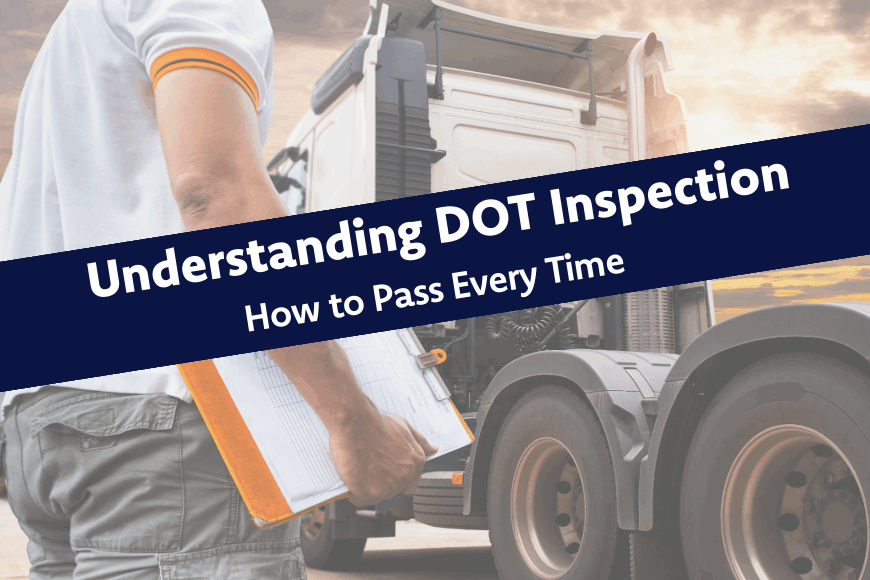
DOT inspections are a critical part of maintaining a safe, compliant fleet. Passing these inspections not only helps avoid fines and downtime but also ensures your fleet operates safely and efficiently. In this week’s article, we outline everything you need to know to keep your semi-trucks’ inspection-ready.
What Are DOT Inspections?
DOT (Department of Transportation) inspections evaluate commercial vehicles to ensure they meet safety standards. These inspections are conducted by state and federal officials and can occur randomly on the road or at dedicated inspection sites.
Key Areas Checked During DOT Inspections
- Brakes: Air brakes, brake pads, drums, and hoses.
- Tires and Wheels: Tread depth, tire pressure, wheel condition, and lug nuts.
- Lights and Electrical Systems: Headlights, brake lights, turn signals, and reflectors.
- Suspension: Springs, shocks, and mounting hardware.
- Steering: Linkages, steering boxes, and fluid leaks.
- Emission Systems: Diesel Particulate Filters (DPF), Diesel Exhaust Fluid (DEF) systems.
Common DOT Inspection Failures
Avoid these frequently cited violations:
- Brake System Issues: Worn brake pads, air leaks, improper brake adjustments.
- Lighting Malfunctions: Burnt-out bulbs or wiring issues.
- Tire Problems: Insufficient tread depth, incorrect tire inflation, visible damage.
- Documentation: Missing or outdated registration, insurance, or driver logs.
Detailed Daily Inspection Guide
To maintain compliance and readiness, drivers should conduct a daily inspection:
- Brake Systems: Check for leaks, proper adjustment, and wear.
- Tires: Verify tread depth, correct inflation, and inspect for visible damage.
- Lights: Ensure all lights and signals function properly.
- Fluid Levels: Inspect oil, coolant, brake, and transmission fluids regularly.
- General Visual Inspection: Look for leaks, structural damage, and overall vehicle integrity.
Preparing Drivers for DOT Inspections
Properly trained drivers greatly increase inspection success:
- Provide training on inspection procedures and required documentation.
- Teach drivers how to communicate effectively with inspectors.
- Ensure drivers understand common violations and preventive measures.
What to Do if Your Truck Fails an Inspection
If your truck fails inspection, take immediate steps:
- Clearly understand the violation cited.
- Arrange prompt repairs or corrective measures.
- Document corrections thoroughly and present them at your re-inspection.
- Review the cause and implement training or maintenance adjustments to prevent recurrence.
Regular, proactive maintenance is key:
- Schedule routine fleet inspections and address identified issues immediately.
- Ensure drivers conduct daily pre-trip and post-trip inspections.
- Maintain clear, accurate documentation and easily accessible records for each vehicle.
Benefits of a DOT Inspection Checklist
A clear, comprehensive checklist ensures every truck in your fleet is consistently inspection-ready. Checklists help identify issues early, simplify daily driver inspections, and significantly reduce the risk of unexpected DOT violations.
Trust Beyer Motorsports for DOT Compliance
At Beyer Motorsports, we specialize in fleet maintenance and DOT compliance. Our experienced technicians offer thorough inspections, prompt repairs, and valuable guidance to ensure your trucks meet DOT standards every time. Schedule your fleet inspection today and stay confidently compliant!
Looking for a more in-depth checklist for your vehicle’s Iowa DOT inspection? Save this checklist from the Iowa DOT!
Related






